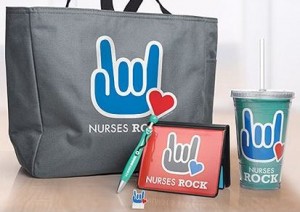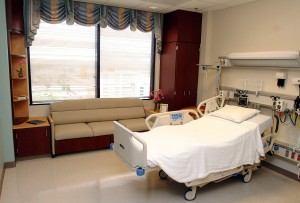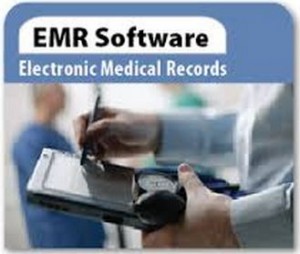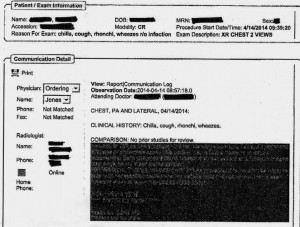April 28th, 2014 by Dr. Val Jones in Health Tips, Opinion
1 Comment »
 As I travel the country providing coverage for inpatient rehab units, I have been struck by the generally high quality of nursing care. Excellent nurses are the glue that holds a hospital unit together. They sound the first alarm when a patient’s health is at risk, they double-check orders and keep an eye out for medical errors. Nurses spend more time with patients than any other hospital staff, and they are therefore in the best position to comment on patient progress and any changes in their condition. An observant nurse nips problems in the bud – and this saves lives.
As I travel the country providing coverage for inpatient rehab units, I have been struck by the generally high quality of nursing care. Excellent nurses are the glue that holds a hospital unit together. They sound the first alarm when a patient’s health is at risk, they double-check orders and keep an eye out for medical errors. Nurses spend more time with patients than any other hospital staff, and they are therefore in the best position to comment on patient progress and any changes in their condition. An observant nurse nips problems in the bud – and this saves lives.
Not only are nurses under-appreciated and under-paid, they are suffering as much as physicians are with new digital documentation requirements. Just as patients are receiving less face time with their physicians, they are also suffering from a reduction in bedside attention from nurses. The need to record data has supplanted our ability to listen to the patient, causing anguish for patients, physicians, and nurses alike.
This being our lot (and with continued “quality improvement” policies that will simply add to the documentation burden) we must find ways to optimize patient care despite inane bureaucratic intrusions. I believe that there are some steps that nurses and doctors can take to improve patient care right now:
1. Minimize “floating.” (Floating is when a nurse is pulled from one part of the hospital to fill in for a gap in coverage in a different unit). It is extremely difficult for nurses to take care of a floor full of patients they’ve never met before. Every time that care of a patient is handed off to someone else (be they MD or RN), there is a risk of forgetting to follow through with a test, procedure, or work up. Simply knowing what “normal” looks like for a given patient can be incredibly important.
For example, left sided weakness is not concerning in a patient with a long-time history of stroke, but what if that is a new finding? If you’ve never met the patient before, you might not realize that the weakness is new and constitutes an emergency. How does a nurse know if a patient’s skin ulcer/rash/pain etc. is better or worse than yesterday? Verbal reports don’t always clarify sufficiently. There are endless advantages to minimizing staff turnover during a patient’s hospital stay. Reducing the total number of nurses who care for individual patients should be a number one priority in hospitals.
2. If you see something, say something. There are a host of reasons why nurses may be hesitant to report patient symptoms. Either they don’t know the patient well and think that the new issue could be “normal” for that patient, or perhaps the physician managing the patient has been unreceptive to previous notifications. However, I am always grateful when a nurse goes out of her way to tell me her concerns, because I generally find that she’s on to something important. My general rule is to over-communicate. If you see something, say something – because that episode of patient anxiety in the middle of the night could be a heart attack. And if I don’t know it’s happening, I can’t fix it.
3. Please don’t diagnose patients without input. I’ve found that nurses generally have excellent instincts about patients, and many times they correctly pinpoint their diagnosis. But other times they can be misled, which can impair their care priorities. For example, I had a patient who was having some difficulty breathing. The nurse told me about it immediately (which was great) but then she proceeded to assume that it was caused by a pulmonary embolism. I explained why I didn’t think this was the case, but she was quite insistent. So much so that when another patient began to have unstable vital signs (and I requested her help with preparing for a rapid response) she stayed with the former patient, believing that his problem was more acute. This doesn’t happen that frequently, but I think it serves as a reminder that physicians and nurses work best as a team when diagnostic conundrums exist.
4. Help me help you. Please do not hesitate to come to me when we need to clean up the EMR orders. If the patient has had blood glucose finger stick checks of about 100 at each of 4 checks every day for 2 weeks, then by golly let’s reduce the checking frequency! If the EMR lists Q4 hour weight checks (because the drop down box landed on “hour” instead of “day” when it was being ordered) I’d be happy to fix it. If a digital order appears out of the ordinary, ask the doctor about it. Maybe it was a mistake? Or maybe there’s a reason for Q4 hour neuro checks that you need to be aware of?
5. Let’s round together. Nurses and physicians should really spend more time talking about patients together. I know that some physicians may be resistant to attending nursing rounds due to time constraints, but I’ve found that there’s no better way to keep a unit humming than to comb through the patient cases carefully one time each day.
This may sound burdensome, but it ends up saving time, heads off problems, and gives nurses a clearer idea of what to look out for. Leaving nurses in the dark about your plan for the patient that day is not helpful – they end up searching through progress notes (for example) to try to guess if the patient is going to radiology or not, and how to schedule their meds around that excursion. Alternately, when it comes time to update your progress note, isn’t it nice to have the latest details on the patient’s condition? Nurses and doctors can save each other a lot of time with a quick, daily debrief.
6. Show me the wounds. Many patients have skin breakdown, rashes, or sores. These are critically important to treat and require careful observation to prevent progression. Doctors want to see wounds at regular intervals, but don’t always take the time to unwrap or turn the patient in order to get a clear view. Alternatively, some MDs simply unwrap/undress wounds at will, leaving the patient’s room without even telling the nurse that they need to be re-wrapped. In some cases, it takes a lot of time to re-dress the complex wound, adding a lot of work to the nurse’s already busy schedule (and offering little benefit, and some degree of discomfort, to the patient).
Nurses, on the other hand, have the opportunity to see wounds more frequently as they provide dressing changes or peri-care at regular intervals. Most nurses and doctors don’t seem to have a good process in place for wound checks. I usually make a deal with nurses that I won’t randomly destroy their dressing changes if they promise to call me to the patient’s bedside when they are in the middle of a scheduled change. This works fairly well, so long as I’m willing/able to drop everything I’m doing for a quick peek.
These are my top suggestions from my most recent travels. I’d be interested in hearing what nurses think about these suggestions, and if they have others for physicians. I’m always eager to improve my patient care, and optimizing my nursing partnerships is a large part of that. 😆
April 25th, 2014 by Dr. Val Jones in Opinion, True Stories
No Comments »
 If you (or a loved one) have been admitted to a hospital recently, you were probably surprised by the number of times you were asked the same questions. At first you might assume that the staff are being diligent in double-checking your information, but after the fifth healthcare provider asks you to explain why you’re there, you start to feel as if interacting with “the system” is like talking to a person with no short term memory. It’s as if the hospital itself has some kind of dementia.
If you (or a loved one) have been admitted to a hospital recently, you were probably surprised by the number of times you were asked the same questions. At first you might assume that the staff are being diligent in double-checking your information, but after the fifth healthcare provider asks you to explain why you’re there, you start to feel as if interacting with “the system” is like talking to a person with no short term memory. It’s as if the hospital itself has some kind of dementia.
Recent adoption of electronic data collection, shift working, team management, and over-specialization have exponentially increased the complexity of patient care. Unfortunately, the complexity is fueling medical errors, repeat and unnecessary testing, as well as misdiagnoses. As primary care physicians have eloquently argued, being cared for by those who don’t know you can be a huge cost driver, and create all manner of unnecessary anxiety. Perhaps a true story will help to illustrate my point?
Not too long ago, I was caring for a patient in an acute rehab unit. Over a three week period of time I got to know her idiosyncrasies quite well. She had had a recent chest surgery and the surgical site was exquisitely tender, but without evidence of infection. In addition, she was allergic to certain kinds of tape and had had an unfortunate blistering reaction to the tape that had been near her surgical site. She had anxiety disorder that was well managed with medicine and talk therapy. She had a large family who visited her daily, some of whom had decided not to vaccinate their children. I had spent a good deal of time helping them to understand the risks associated with those choices.
I signed out my patient’s care to the weekend hospitalist team on Friday afternoon, and was alarmed to discover my patient in an isolation room on Monday morning, in the midst of a nervous breakdown, and surrounded by gowned family members who were furiously calling for emergency transport of distant children to various hospitals. I had not heard a peep from the hospitalists about events over the weekend, and immediately gowned up to find out what was going on.
My patient sobbed, “The doctor told me I have shingles. Now my grand children are going to get chicken pox and they’ll have brain damage!”
“Which doctor told you that you have shingles?” I asked.
“I don’t know his name. Some doctor who was here this weekend,” she wailed.
“How did he know you had shingles?” I said, sitting down next to her bed, trying to console her.
“He looked at my chest rash.” She replied, pointing to the patch of contact dermatitis at the site of the recent surgical tape removal. “He asked me if it was painful and I said ‘yes.'”
“But it’s the surgery site that’s painful as it has always been, right?” I said.
“Yes, it’s the same pain.”
It dawned on me that a linear patch of painful blisters did look a lot like shingles, especially to someone who had never seen the patient before. I could see why the hospitalist suspected it, but unfortunately he wasn’t aware of her long standing wound tenderness or tape reaction. The fallout from this well-meaning misdiagnosis was especially large, given the psycho-social context. A large, anxious family, with many unvaccinated kids who had traveled from far away to see grandma in the rehab unit over the weekend. It was the perfect storm.
Needless to say, it took me several days to unravel the damage, reassure the family, and recall the “emergency chicken pox” ER visits that were planned in distant parts of the state (where the kids made their home). The pregnant nurse who was treating the patient over the weekend had to create a full report to employee health about her “high risk encounter.” And in the end, the family and nursing staff didn’t feel completely certain that she didn’t have shingles, since it was officially documented in the EMR by at least one physician, no matter what my argument.
This is just one example of how cross-sectional relationships with patients (rather than the preferred, longitudinal kind), can wreak havoc. Because of the incredible degree of turnover inherent in today’s inpatient care systems, patients are examined “from scratch” by every new shift of nurse, physician, physical therapist, case manager, etc. There is very little context available to assist with interpreting how the patient is doing compared to their previous state. Searching for such pearls can be time consuming in a medical chart that is not designed for clear communication, but billing purposes.
What are we to do when faced with a new patient with a concerning complaint? Search the chart for historical clues, look for a staff member who has known them longer than one shift, or perhaps ask the patient:
“So can you tell me again why you came to the hospital?”
April 22nd, 2014 by Dr. Val Jones in Health Policy, Humor, Opinion
1 Comment »
 In my last post I wrote about the communication difficulties caused by electronic medical records systems. The response on Twitter ranged from sentiments including everything from “right on, sister” to “greedy doctors are only complaining about EMRs because of their price tag.” The disconnect between policy wonk’s (and EMR vendor’s) belief in the transformative power of EMRs and exasperated clinician users of these products is jaw-dropping. Physicians are often labeled as obstinate dinosaurs, blocking progress, while policy wonks are considered by physicians to be living in an alternate reality where a mobile phone app could fix all that is wrong with the healthcare system.
In my last post I wrote about the communication difficulties caused by electronic medical records systems. The response on Twitter ranged from sentiments including everything from “right on, sister” to “greedy doctors are only complaining about EMRs because of their price tag.” The disconnect between policy wonk’s (and EMR vendor’s) belief in the transformative power of EMRs and exasperated clinician users of these products is jaw-dropping. Physicians are often labeled as obstinate dinosaurs, blocking progress, while policy wonks are considered by physicians to be living in an alternate reality where a mobile phone app could fix all that is wrong with the healthcare system.
Being on the dinosaur side, I thought I’d try a quick experiment/analogy to demonstrate that EMR dissatisfaction is not a mere cost artifact. To show what happens when a digital intermediary runs medical information through a translator, I selected a random paragraph about the epidemiology of aphasias from an article in Medscape. I copied and pasted it into Google translator and then ran it backwards and forwards a few times in different languages. In the end, the original paragraph (exhibit A) became the second paragraph (exhibit B):
Exhibit A:
“Not enough data are available to evaluate differences in the incidence and clinical features of aphasia in men and women. Some studies suggest a lower incidence of aphasia in women because they may have more bilaterality of language function. Differences may also exist in aphasia type, with more women than men developing Wernicke aphasia.”
Exhibit B:
“Prevalence and characteristics of men and women are expected to afasia is not enough information available. If afasia some studies, women work more, not less, because they show that the spoken language. There may be differences in the type of OST, women and men to develop more of a vernikke afasia, more.”
Although the B paragraph bears some resemblance to A, it is nearly impossible to determine its original meaning. This is similar to what happens to medical notes in most current EMRs (except the paragraph would be broken up with lab values and vital signs from the past week or two). If your job were to read hundreds of pages of B-type paragraphs all day, what do you think would happen? Would you enthusiastically adopt this new technology? Or would you give up reading the notes completely? Would you need to spend hours of your day finding “work-arounds” to correct the paragraphs?
And what would you say if the government mandated that you use this new technology or face decreased reimbursement for treating patients? What if you needed to demonstrate “meaningful use” or dependency and integration of the translator into your daily workflow in order to keep your business afloat? What if the scope of the technology were continually expanded to include more and more written information so that everything from lab orders to medication lists to hospital discharges, nursing summaries, and physical therapy notes, etc. were legally required to go through the translator first? And if you pointed out that this was not improving communication but rather introducing new errors, harming patients, and stealing countless hours from direct clinical care, you would be called “change resistant” or “lazy.”
And what if 68,000 new medical codes were added to the translator, so that you couldn’t advance from paragraph to paragraph without selecting the correct code for a disease (such as gout) without reviewing 150 sub-type versions of the code. And then what if you were denied payment for treating a patient with gout because you did not select the correct code within the 150 subtypes? And then multiply that problem by every condition of every patient you ever see.
Clearly, the cost of the EMR is the main reason why physicians are not willing to adopt them without complaint. Good riddance to the 50% of doctors who say they’re going to quit, retire, or reduce their work hours within the next three years. Without physicians to slow down the process of EMR adoption, we could really solve this healthcare crisis. Just add on a few mobile health apps and presto: we will finally have the quality, affordable, healthcare that Americans deserve.
April 21st, 2014 by Dr. Val Jones in Opinion, True Stories
2 Comments »
 For the past couple of years I’ve been working as a traveling physician in 13 states across the U.S. I chose to adopt the “locum tenens lifestyle” because I enjoy the challenge of working with diverse teams of peers and patient populations. I believe that this kind of work makes me a better doctor, as I am exposed to the widest possible array of technology, specialist experience, and diagnostic (and logistical) conundrums. During my down times I like to think about what I’ve learned so that I can try to make things better for my next group of patients.
For the past couple of years I’ve been working as a traveling physician in 13 states across the U.S. I chose to adopt the “locum tenens lifestyle” because I enjoy the challenge of working with diverse teams of peers and patient populations. I believe that this kind of work makes me a better doctor, as I am exposed to the widest possible array of technology, specialist experience, and diagnostic (and logistical) conundrums. During my down times I like to think about what I’ve learned so that I can try to make things better for my next group of patients.
This week I’ve been considering how in-patient doctoring has changed since I was in medical school. Unfortunately, my experience is that most of the changes have been for the worse. While we may have a larger variety of treatment options and better diagnostic capabilities, it seems that we have pursued them at the expense of the fundamentals of good patient care. What use is a radio-isotope-tagged red blood cell nuclear scan if we forget to stop giving aspirin to someone with a gastrointestinal bleed?
At the risk of infecting my readers with a feeling of helplessness and depressed mood, I’d like to discuss my findings in a series of blog posts. Today’s post is about why electronic medical charts have become ground zero for deteriorating patient care.

EMR Alert - Featuring radiologist note in illegible font color
1. Medical notes are no longer used for effective communication, but for billing purposes. When I look back at the months of training I received at my alma mater regarding the proper structure of intelligent medical notes, I recall with nostalgia how beautiful they were. Each note was designed to present all the observed and collected data in a cohesive and logical format, justifying the physician’s assessment and treatment plan. Our impressions of the patient’s physical and mental condition, reasons for further testing, and our current thought processes regarding optimal treatments and follow up (including citation of scientific literature to justify the chosen course) were all crisply presented.
Nowadays, medical notes consist of randomly pre-populated check box data lifted from multiple author sources and vomited into a nonsensical monstrosity of a run-on sentence. It’s almost impossible to figure out what the physician makes of the patient or what she is planning to do. Occasional “free text” boxes can provide clues, when the provider has bothered to clarify. One needs to be a medical detective to piece together an assessment and plan these days. It’s both embarrassing and tragic… if you believe that the purpose of medical notes is effective communication. If their purpose is justifying third-party payer requirements, then maybe they are working just fine?
My own notes have been co-opted by the EMRs, so that when I get the chance to free-text some sensible content, it still forces gobbledygook in between. I can see why many of my peers have eventually “given up” on charting properly. No one (except coders and payers interested in denying billing claims) reads the notes anymore. The vicious cycle of unintelligible presentation drives people away from reading notes, and then those who write notes don’t bother to make them intelligent anymore. There is a “learned helplessness” that takes over medical charting. All of this could (I suppose) be forgiven if physicians reverted back to verbal handoffs and updates to other staff/peers caring for patients to solve this grave communication gap. Unfortunately, creating gobbledygook takes so much time that there is less old fashioned verbal communication than ever.
2. No one talks to each other anymore. I’m not sure if this is because of a general cultural shift away from oral communication to text-based, digital intermediaries (think zombie-like teens texting one another incessantly) or if it’s related to sheer time constraints. However, I am continually astonished by the lack of face-to-face or verbal communication going on in hospitals these days. When I first observed this phenomenon, I attributed it to the facility where I was working. However, experience has shown that this is an endemic problem in the entire healthcare system.
When you are overworked, it’s natural to take the path of least resistance – checking boxes and ordering consults in the EMR is easier than picking up a phone and constructing a coherent patient presentation to provide context for the specialist who is about to weigh in on disease management. Nursing orders are easier to enter into a computer system than actually walking over and explaining to him/her what you intend for the patient and why.
But these shortcuts do not save time in the long run. When a consultant is unfamiliar with the partial workup you’ve already completed, he will start from the beginning, with duplicate testing and all its associated expenses, risks, and rabbit trails. When a nurse doesn’t know that you’ve just changed the patient to “NPO” status (or for what reason) she may give him/her scheduled medications before noticing the change. When you haven’t explained to the physical therapists why it could be dangerous to get a patient out of bed due to a suspected DVT, the patient could die of a sudden pulmonary embolism. Depending upon computer screen updates for rapid changes in patient care plans is risky business. EMRs are poor substitutes for face-to-face communication.
In one case I remember a radiology tech expressing amazement that I had bothered to type the reason for the x-ray in the order field. How can a radiologist be expected to rule out something effectively if he isn’t given the faintest hint about what he’s looking for? On another occasion I called to speak with the radiologist on a complicated case where the patient’s medical history provided him with a clue to look for something he hadn’t thought of – and his re-read of the CT scan led to the discovery and treatment of a life-threatening disease. Imagine that? An actual conversation saved a life.
3. It’s easy to be mindless with electronic orders. There’s something about the brain that can easily slip into “idle” mode when presented with pages of check boxes rather than a blank field requiring original input. I cannot count the number of times that I’ve received patients (from outside hospitals) with orders to continue medications that should have been stopped (or forgotten medications that were not on the list to be continued). In one case, for example, a patient with a very recent gastrointestinal bleed had aspirin listed in his current medication list. In another, the discharging physician forgot to list the antibiotic orders, and the patient had a partially-treated, life-threatening infection.
As I was copying the orders on these patients, I almost made the same mistakes. I was clicking through boxes in the pharmacy’s medication reconciliation records and accidentally approved continuation of aspirin (which I fortunately caught in time to cancel). It’s extremely unlikely that I would have hand-written an order for aspirin if I were handling the admission in the “old fashioned” paper-based manner. My brain had slipped into idle… my vigilance was compromised by the process.
In my view, the only communication problem that EMRs have solved is illegible handwriting. But trading poor handwriting for nonsensical digital vomit isn’t much of an advance. As far as streamlining orders and documentation is concerned, yes – ordering medications, tests, and procedures is much faster. But this speed doesn’t improve patient care any more than increasing the driving speed limit from 60 mph to 90 mph would reduce car accidents. Rapid ordering leads to more errors as physicians no longer need to think carefully about everything. EMRs have sped up processes that need to be slow, and slowed down processes that need to be fast. From a clinical utility perspective, they are doing more harm than good.
As far as coding and billing are concerned, I suppose they are revolutionary. If hospital care is about getting paid quickly and efficiently then perhaps we’re making great strides? But if we are expecting EMRs to facilitate care quality and communication, we’re in for a big disappointment. EMRs should have remained a back end billing tool, rather than the hub of all hospital activity. It’s like using Quicken as your life’s default browser. Over-reach of this particular technology is harming our patients, undermining communication, and eroding critical thinking skills. Call me Don Quixote – but I’m going to continue tilting at the hospital EMR* windmill (until they are right-sized) and engage in daily face-to-face meetings with my peers and hospital care team.
*Note: there is at least one excellent, private practice EMR (called MD-HQ). It is for use in the outpatient setting, and is designed for communication (not billing). It is being adopted by direct primary care practices and was created by physicians for supporting actual thinking and relevant information capture. I highly recommend it!
March 31st, 2014 by Dr. Val Jones in Health Policy, Health Tips, Opinion, Research
2 Comments »
 A Canadian study published today in the Annals of Internal Medicine suggests that about one third of new prescriptions (written by primary care physicians) are never filled. Over 15,000 patients were followed from 2006 to 2009. Prescription and patient characteristics were analyzed, though patients were not directly interviewed about their rationale for not filling their prescriptions.
A Canadian study published today in the Annals of Internal Medicine suggests that about one third of new prescriptions (written by primary care physicians) are never filled. Over 15,000 patients were followed from 2006 to 2009. Prescription and patient characteristics were analyzed, though patients were not directly interviewed about their rationale for not filling their prescriptions.
In short, patients were less likely to fill a prescription if the treatment was expensive, but certain types of drug indications had consistently higher non-fill rates:
- Headache (51% not filled)
- Ischemic heart disease (51.3% not filled)
- Thyroid agents (49.4% not filled)
- Depression (36.8% not filled)
Overall, hormonal (especially Synthroid), ENT (especially Flonase), skin, and cardiovascular drugs (especially statins) had the highest non-fill rates.
As far as those prescriptions more likely to be filled, antibiotics (especially for urinary tract infections) ranked number one.
Trends towards prescription compliance were seen among older, healthier patients, and those who were switching medications within a class rather than starting an entirely new drug. Patients who received prescriptions from a doctor that they visited regularly (rather than a new provider) were also more likely to fill their prescriptions.
This study was not designed to elucidate the exact rationale behind prescription non-adherence, but I am willing to speculate about it. In my experience, patients are less likely to fill a prescription if a reasonable over-the-counter alternative is available (think headache or allergy relief). I also suspect that they are less likely to fill a prescription if they believe it won’t help them (skin cream) or isn’t treating a palpable symptom (statin therapy for dyslipidemia). Finally, patients are probably nervous about starting a medicine that could effect their metabolism or cognition (thyroid medication or anti-depressant) without a full explanation of the possible benefits and side effects.
I was surprised to see how compliant patients seem to be with antibiotic agents (at least, filling the initial prescriptions). Given the increasing rates of antibiotic resistance, this reinforces the need to limit prescriptions to those agents truly indicated, and to analyze bacterial sensitivities during the treatment process to optimize medical management.
My take home message from this study is that providers need to do a better job of explaining the reasoning behind new prescriptions (their necessity, consequences of non-compliance, and risk/benefit profiles) and reviewing the overall cost to the patient. If a cheaper, effective alternative is available (whether OTC or generic), we should consider prescribing it. Providers can likely improve medication compliance rates with a little patient education and price consciousness. Extra time should be spent with patients at higher risk for non-compliance due to their personal situation (age, degree of illness, income level) or if a specific drug with lower compliance rates is being introduced (Synthroid, statins, etc.) Regular follow up (especially with the same prescriber) to ensure that prescriptions are filled and taken as directed is also important.
 As I travel the country providing coverage for inpatient rehab units, I have been struck by the generally high quality of nursing care. Excellent nurses are the glue that holds a hospital unit together. They sound the first alarm when a patient’s health is at risk, they double-check orders and keep an eye out for medical errors. Nurses spend more time with patients than any other hospital staff, and they are therefore in the best position to comment on patient progress and any changes in their condition. An observant nurse nips problems in the bud – and this saves lives.
As I travel the country providing coverage for inpatient rehab units, I have been struck by the generally high quality of nursing care. Excellent nurses are the glue that holds a hospital unit together. They sound the first alarm when a patient’s health is at risk, they double-check orders and keep an eye out for medical errors. Nurses spend more time with patients than any other hospital staff, and they are therefore in the best position to comment on patient progress and any changes in their condition. An observant nurse nips problems in the bud – and this saves lives.

 If you (or a loved one) have been admitted to a hospital recently, you were probably surprised by the number of times you were asked the same questions. At first you might assume that the staff are being diligent in double-checking your information, but after the fifth healthcare provider asks you to explain why you’re there, you start to feel as if interacting with “the system” is like talking to a person with no short term memory. It’s as if the hospital itself has some kind of dementia.
If you (or a loved one) have been admitted to a hospital recently, you were probably surprised by the number of times you were asked the same questions. At first you might assume that the staff are being diligent in double-checking your information, but after the fifth healthcare provider asks you to explain why you’re there, you start to feel as if interacting with “the system” is like talking to a person with no short term memory. It’s as if the hospital itself has some kind of dementia. In
In  For the past couple of years I’ve been working as a traveling physician in 13 states across the U.S. I chose to adopt the “
For the past couple of years I’ve been working as a traveling physician in 13 states across the U.S. I chose to adopt the “









